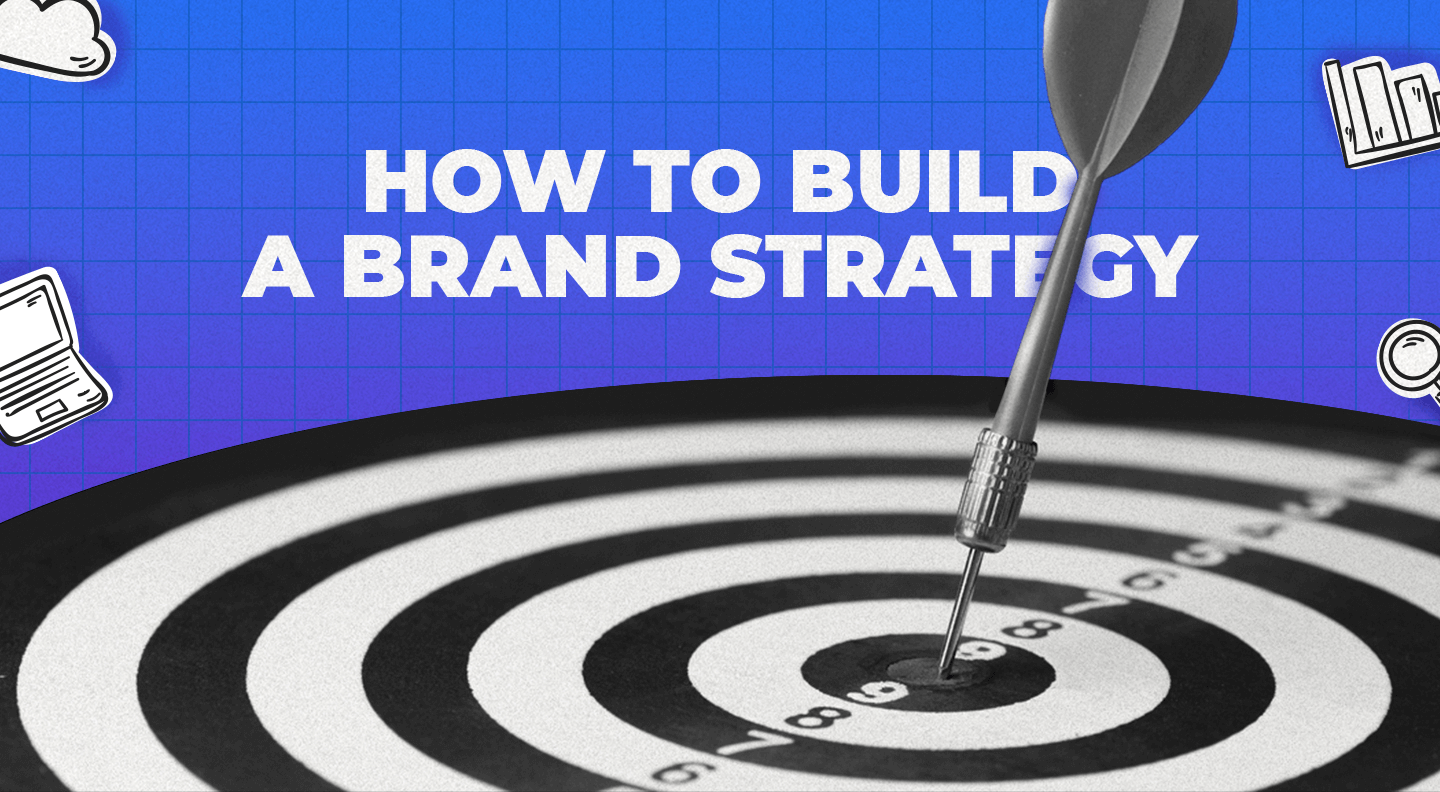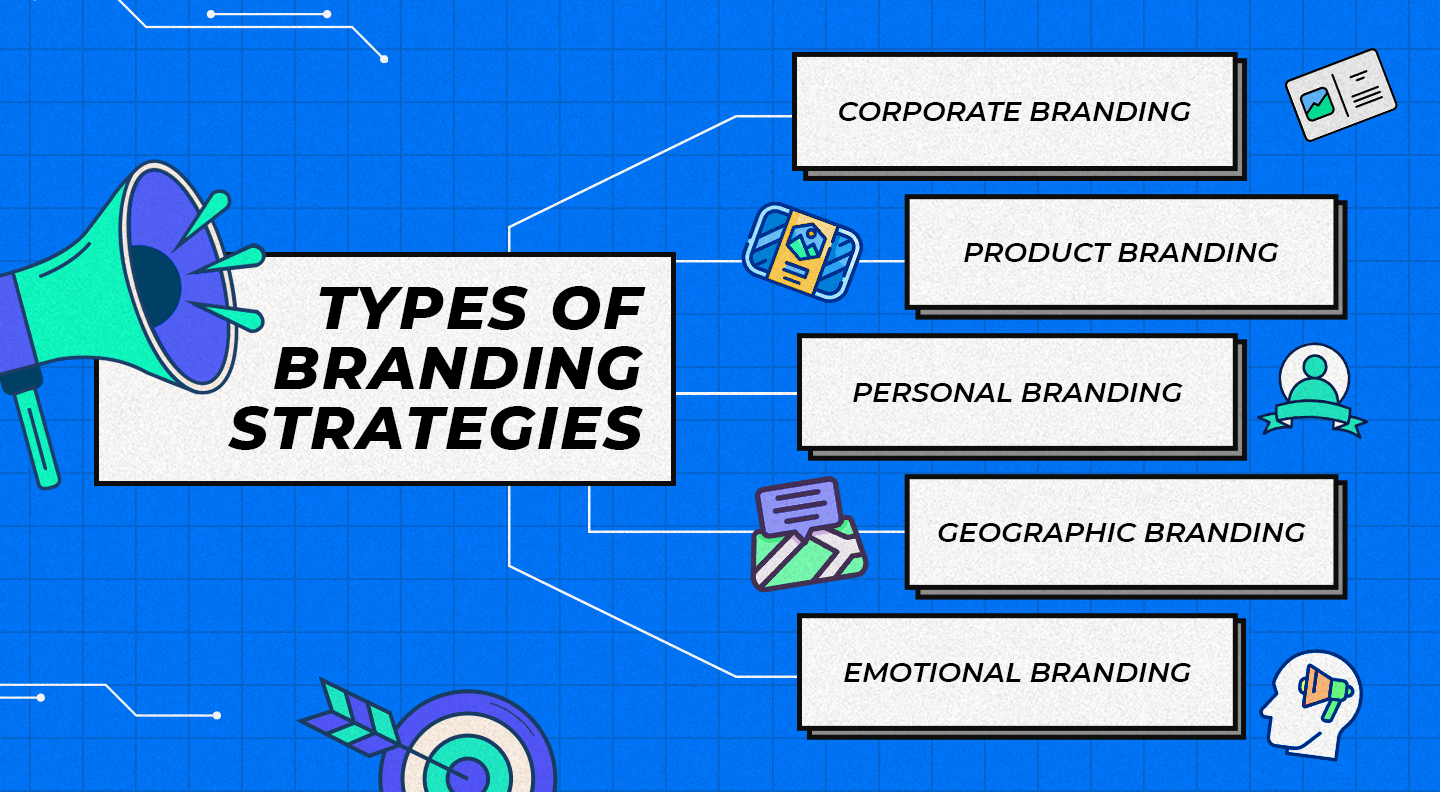Build a Successful Brand Strategy with This Expert Guide

Do you know that Amul, India’s most iconic dairy brand, procures milk from 3.6 million milk producer members and sells over 1 crore milk packets every day? That’s the power of a well-executed brand strategy! In today’s fiercely competitive market, building a strong brand is a necessity. A strong brand not only helps you stand out from the crowd but also forges deep, emotional connections with your customers. It’s the foundation upon which customer loyalty, advocacy, and long-term business success are built.
But what exactly is a brand strategy and how does it help your business? In this blog, we’ll dive deep into the world of brand strategy and learn how you can get started to build a brand from scratch or simply rediscover your existing brand.
What is a Brand Strategy?
A brand strategy is a long-term plan for the development of a successful brand. It shall help you achieve specific goals. It encompasses everything from your brand’s purpose and values to its personality, visual identity and communication style. It serves as a roadmap for all your branding efforts, ensuring that every touchpoint – from your logo and website to your social media posts and customer service interactions – is aligned with your brand’s core identity and values. Your brand strategy is a living, breathing entity that evolves with your business, adapts to changing market conditions and customer needs. It’s the north star that guides your decision-making, inspires your team and sets you apart from the competition.
How to Develop a Brand Strategy
Find Your Brand’s Purpose & Brand Name
The first step in developing a brand strategy is to identify your brand’s core purpose – the reason it exists beyond making a profit. This purpose should be rooted in the value your brand provides to its customers and the impact it seeks to make in the world. For example when we hear the word Apple, we know their products are going to be innovative, different.
Once you’ve identified your brand’s purpose, it’s time to give it a name. Your brand name should be memorable, easy to pronounce, and reflective of your brand’s personality and values. It should also be unique and distinguish you from the competition.
Define Your Mission, Vision & Values
With your brand purpose and name in place, the next step is to define your brand’s mission, vision, and values.
Your mission statement articulates what your brand does, who it serves, and how it creates value. It should be clear, concise, and inspiring. Amul’s mission, for instance, is to “provide quality & hygienic products at affordable prices.”
Your vision statement, on the other hand, describes your brand’s long-term aspirations and the impact it hopes to make in the world. It should be ambitious, yet achievable.
Your brand values are the guiding principles that shape your brand’s behavior and decision-making. They should reflect what your brand stands for and how it conducts itself. The Tata Group, for example, is known for its commitment to integrity, responsibility, and excellence.
Articulate Your Brand Messaging
Your brand messaging is the language and narrative that you use to communicate your brand’s value proposition, personality, and benefits to your target audience. It should be consistent across all touchpoints and tailored to the needs, preferences, and emotions of your customers.
To develop your own brand messaging, start by understanding your target audience – their needs, desires, pain points, and emotional triggers. Then, craft a messaging framework that articulates your brand’s unique value proposition, personality, and benefits in a way that resonates with your audience.
Define Your Brand Voice & Tone
Your brand voice is the distinct personality that comes through in all your brand communications. It should reflect your brand’s values, attitudes, and unique character. Your tone, on the other hand, refers to the emotional inflection of your voice and can vary depending on the situation and audience.
For example, Amul is known for its witty, topical, and slightly irreverent voice, which is reflected in its iconic billboard ads. On the other hand, a brand like Taj Hotels has a more sophisticated, warm, and inviting voice that reflects the luxury and hospitality of its brand. To define your brand voice and tone, start by identifying your brand’s core personality traits and values. Then, create a set of guidelines that outline how your brand should sound and feel across different touchpoints and situations.
Craft Your Brand Tagline
A brand tagline is a short, catchy phrase that captures the essence of your brand and its key differentiator. It should be memorable, evocative, and aligned with your brand’s personality.
Some of India’s most iconic brand taglines have become part of the cultural lexicon. From Cocacola’s “Thanda Matlab, Cocacola” to Airtel’s “Har Ek Friend Zaroori Hota Hai,” these taglines instantly evoke the brand and the emotions associated with it. To create your own brand tagline, start by brainstorming your brand’s unique selling points, personality traits, and the key benefits it provides to customers. Then, play around with different words, phrases, and rhetorical devices until you land on a tagline that feels authentic, distinctive, and true to your brand.
Define Your Brand’s Visual Identity
When you hear the word Zomato or CocaCola, you automatically imagine the colour Red or when you think of Swiggy, you are perhaps already aware about its association with Orange colour. Your brand’s visual identity is the collection of visual elements – such as your logo, colour palette, typography, and imagery – that make your brand instantly recognizable and distinctive. A strong visual identity should be an extension of your brand strategy, reflecting your brand’s personality, values, and unique positioning. It should also be consistently applied across all touchpoints, from your website and packaging to your business cards and social media profiles.
Create a Brand Style Guide
Once you’ve defined your brand’s verbal and visual identity, it’s important to codify it in a brand style guide. This document serves as a reference for everyone who creates content or designs for your brand, ensuring consistency and cohesion across all touchpoints.
Your brand style guide should include guidelines for your brand’s logo usage, color palette, typography, imagery, voice and tone, and messaging. It should also provide examples of how these elements should be applied across different media and contexts.
Develop Your Brand Architecture
If your company has multiple products, services, or sub-brands, it’s important to develop a clear brand architecture that defines how they relate to each other and to the parent brand. There are several different brand architecture models, such as the branded house (where all products and services are marketed under a single master brand, like FedEx), the house of brands (where each product or service has its own distinct brand identity, like Unilever), and the endorsed brand (where each product or service has its own identity but is endorsed by the parent brand, like Marriott).
The right brand architecture model for your business will depend on factors like your industry, target audience, and growth strategy. By developing a clear and strategic brand architecture, you can create a cohesive and efficient brand portfolio that maximizes the value of each individual brand while also supporting the growth of the parent brand.
Manage Your Brand’s Reputation
Your brand’s reputation is the sum of all the perceptions, beliefs, and experiences that people have about your brand. It’s shaped by everything from your products and services to your customer service, marketing, and public relations.
To build and maintain a strong brand reputation, it’s important to actively monitor and manage what people are saying about your brand online and offline.
Measure Your Brand’s Performance
Finally, to ensure that your brand strategy is effective and achieving its goals, you shall regularly measure and track your brand’s performance. This involves setting clear KPIs (key performance indicators) for your branding efforts and using tools like brand tracking surveys, social media analytics, and web analytics to monitor your progress. Some common brand KPIs can be brand awareness (the percentage of your target audience that is aware of your brand), brand consideration (the percentage of your target audience that would consider purchasing from your brand), and brand loyalty (the percentage of your customers that are loyal to your brand and would recommend it to others).
Types of Branding Strategies

There are several different types of branding strategies that companies can use depending on their goals, target audience, and competitive landscape. Here are a few of the most common types:
Corporate Branding
Corporate branding involves creating a strong, cohesive brand identity for the entire organization, rather than just individual products or services. This type of branding is often used by large, multi-faceted companies that want to create a unified brand image across all their business units and touchpoints.
For example: Tata Group, Adani, Reliance etc.
Product Branding
Product branding, on the other hand, focuses on creating a distinct brand identity for a specific product or product line, often within a larger company. This type of branding is often used in highly competitive markets where differentiation is key.
Maggi instant noodles, Kingfisher beer, and Amul butter – each of these brands has a strong, distinctive brand identity that sets it apart from competitors in its category.
Personal Branding
Personal branding involves creating a strong, authentic brand identity for an individual, often with the goal of establishing them as a thought leader or expert in their field. This type of branding is often used by entrepreneurs, freelancers, and public figures who want to build a loyal following and monetize their expertise.
Sandeep Maheshwari (motivational speaker and entrepreneur), Rajat Sharma (journalist) and Ranveer Brar (celebrity chef), these people have managed to build a great personal brand over the last few years.
Geographic Branding
Geographic branding involves creating a brand identity that is closely tied to a specific location or region, often with the goal of promoting tourism or regional pride. This type of branding often leverages the unique culture, history, and natural beauty of the location to create a compelling brand story.
In India, some examples of geographic branding include ‘Incredible India’ (the country’s official tourism brand), ‘Make in India’ (a national campaign to promote India as a manufacturing hub).
Emotional Branding
Emotional branding involves creating a deep, personal connection with customers by tapping into their emotions, desires, and aspirations. This type of branding often uses storytelling, imagery, and music to create a strong emotional resonance with the target audience.
Some examples ‘Jaago Re’ campaign by Tata Tea (which taps into the audience’s desire for social change and civic duties), the ‘Har Ghar Tiranga’ campaign by the Government of India (which appeals to national pride and patriotism), and the “Real Beauty” campaign by Dove (which challenges narrow beauty standards and celebrates diversity).
So, building a strong brand strategy is essential for any business that wants to stand out in today’s crowded marketplace and build lasting relationships with its customers. As Mr. Kapil Vaishnani, our founder of Litmus Branding, puts it: “Only people have the power to build great brands”. In other words, a successful brand strategy is not just about creating a catchy logo or tagline – it’s about forging deep, emotional connections with your target audience and delivering on your brand promise consistently over time.
We hope the steps outlined in this guide help you to get started. Meanwhile you can also check some of the brand stories which we get a chance to work on. Once you get started, we’re here to help you write your brand’s success story, one chapter at a time.
P.S. We Love Your Company!
Explore the World of Branding
- Understanding the 6 parts of the Brand Identity Prism
- Guide for B2B Branding
- How to Build Successful Brand Strategy Framework for Business to Grow?
- Why Branding is Important for Start-ups


